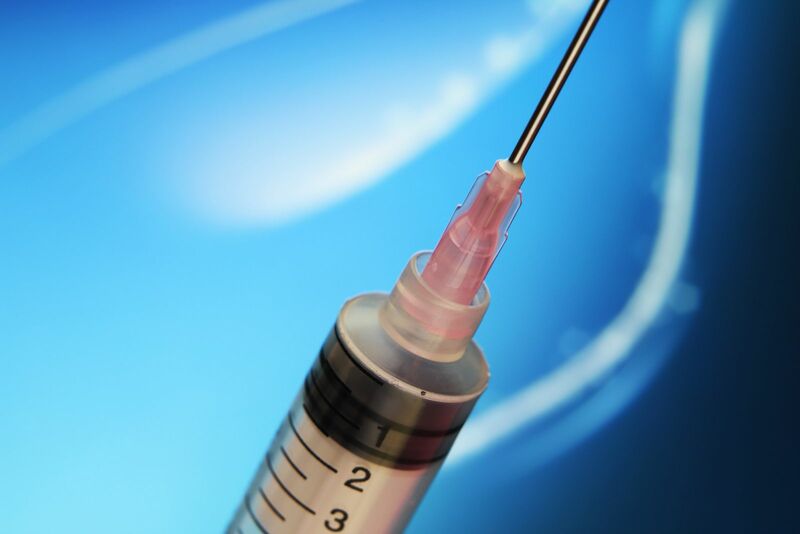
According to the Food and Drug Administration (FDA), about 70% of adults in the U.S. are obese or overweight. That tells you all you need to know about why weight-loss drugs from Eli Lilly & Company (LLY) and Novo Nordisk (NVO) have become such hot sellers that neither company can keep up with demand.
This new class of weight loss drugs — known as GLP-1 — need to be taken consistently for lasting results. That’s why J.P. Morgan thinks sales of these drugs could exceed $100 billion by 2030!
This is very good news for Lilly shareholders. The company was once considered an unexciting also-ran in the pharma industry. There were better and faster-growing drug companies. After all, the maker of psychiatric drugs like Prozac was struggling to replace lost sales from patent expirations on some of its most profitable treatments during the decade of the 2010s.
In fact, Lilly had less revenue in 2019 ($22.32 billion) than it did in 2011 ($24.28 billion). No wonder then that, in the latter half of the decade, its market capitalization went nowhere, hanging around the $100 billion mark.
These days, Lilly is the world’s most valuable drugmaker, after overtaking Johnson & Johnson (JNJ) last summer. It also recently blew past Tesla (TSLA) terms of market cap, and is now the 9th-largest S&P 500 Index ($SPX) component, with a capitalization of nearly $700 billion.
And it’s all thanks to tirzepatide, which has been approved to treat type 2 diabetes since 2022 under the brand name Mounjaro. Some doctors had been prescribing it off-label as a weight-loss drug. And then finally, last November, the FDA gave its blessing. It greenlighted the drug to be used as an obesity treatment under the name Zepbound.
Zepbound: An All-Time Best-Seller?
Zepbound is the next frontier in weight-loss treatments. It’s what’s called a dual agonist, because it mimics the effects of two different hormones. The injection combines GLP-1 with another gut hormone, glucose-dependent insulinotropic polypeptide, or GIP, that helps lower blood sugar and may also increase metabolism.
Together, they cause more weight loss with potentially fewer side effects. In separate studies, Zepbound helped people lose up to 20.9% of their body weight in 72 weeks, whereas Wegovy came in at 14.9% in 68 weeks. Therefore, Zepbound could become the future market leader, if more clinical trial data is favorable.
Launched in early December, Zepbound already hit fourth-quarter sales of $176 million and is expected to generate $2.41 billion this year.
Lilly also has another injection in the pipeline called retatrutide, which combines GLP-1 and GIP with glucagon, a hormone that increases the long-term rate at which calories are burned. Scientists call it “triple g.” In a mid-stage study, retatrutide helped patients lose almost a third of their body weight in 48 weeks. Lilly is also exploring GLP-1s that reduce nausea, preserve muscle mass and come in pill form.
Of course, Novo Nordisk has similar drugs in its pipeline, including a pill. This is just a continuation of the century-plus competition between the two firms.
Alzheimer’s Drug in the Pipeline
Of course, Lilly is a lot more than a company with just a weight loss drug. It also has a promising drug in the field of Alzheimer’s, which is the most common form of dementia. It affects 55 million people worldwide.
Dementia experts hailed the latest landmark in the treatment of Alzheimer’s after Lilly released trial results that showed its new drug significantly slowed memory loss and cognitive decline. Last July, it reported full findings of its phase 3 clinical study of donanemab, showing that the antibody treatment slowed progression by about 35% in the early stages of the disease.
Donanemab is based on antibodies against amyloid, one of the toxic proteins that build up in the brain as Alzheimer’s proceeds. It is active when the amyloid fibers have clumped together into larger accumulations of plaque.
The trial data gave tentative indications that donanemab might be more effective than rival drug lecanemab when administered to people in the earliest stages of Alzheimer’s. In some cases, it cleared amyloid plaques completely from the brain in some participants, who were then taken off the drug.
What's Next for LLY Stock?
There are some bullish estimates from Wall Street that forecast Zepbound and Mounjaro could generate over $50 billion in peak annual sales - a number that dwarfs Lilly’s total revenues of $28.5 billion for the whole of 2022.
But the number is not as far-fetched as it seems, especially if Lilly can show tirzepatide offers other health benefits, like reducing the risk of heart attacks or strokes. Some early testing from rival Nordisk are most promising in a number of areas, including cardiovascular disease.
Lilly’s tirzepatide also improved symptoms of a liver disease called nonalcoholic steatohepatitis in a study, and full results will be presented at a medical conference later this year. The liver condition represents yet another sales opportunity for Lilly. These clinical trials should eventually encourage the U.S. government and private insurers to include the treatment in its healthcare coverage.
I’m very excited about both Novo Nordisk and Eli Lilly, and have owned both stocks for a while. LLY is a strong buy on any minor weakness, at $750 or below.








